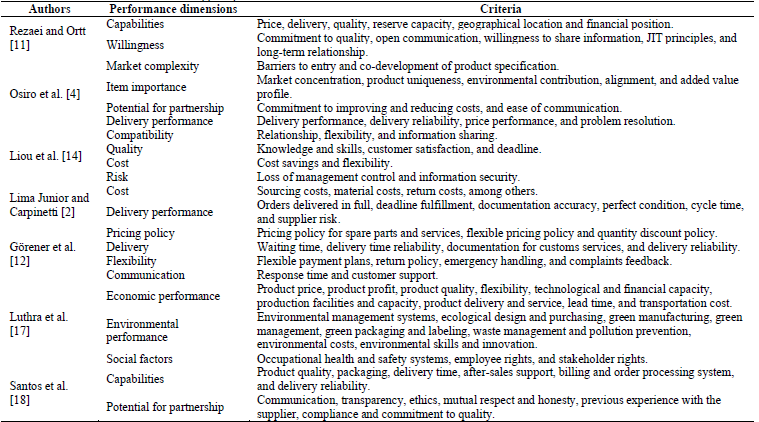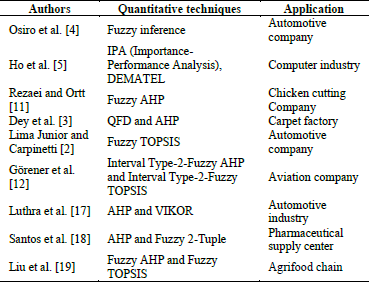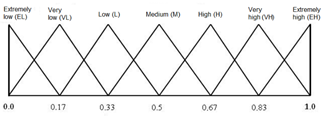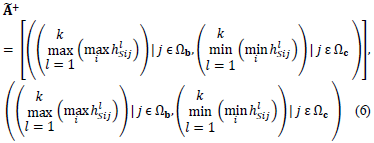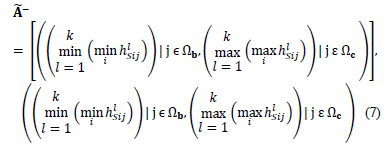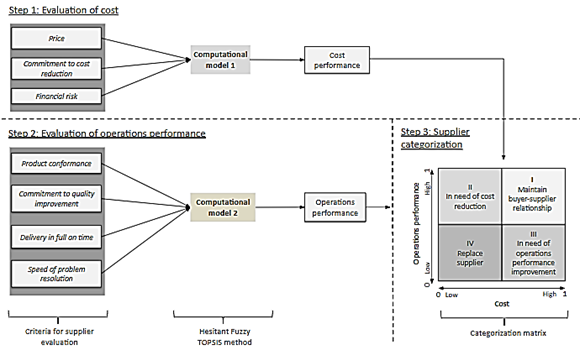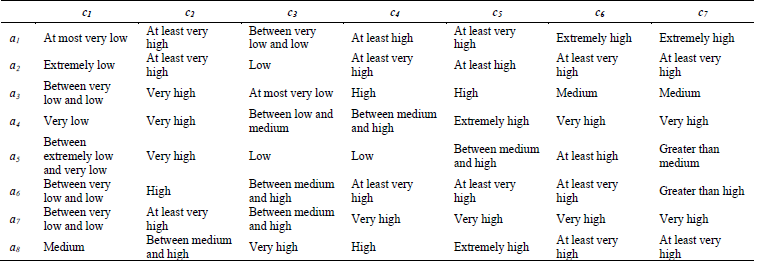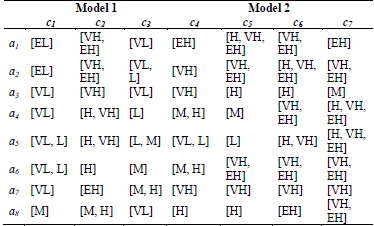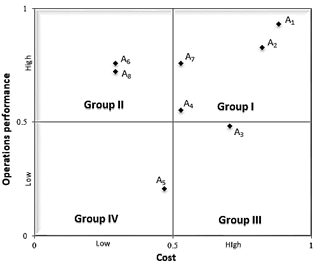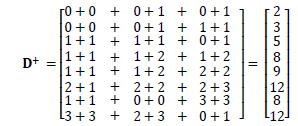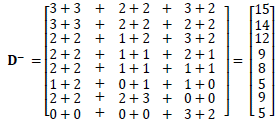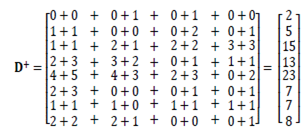1. Introduction
In the face of globalized markets, supply chain management emerges as a way to achieve competitive advantage, since it encourages the strengthening of relationships with suppliers to make them strategic partners of the purchasing company [1]. Supplier performance management has become a key process for many companies as it represents most of the spending for several organizations. Besides influencing the operating costs of the purchasing company, the supplier performance affects the quality of products, delivery times and, consequently, the satisfaction of the final customer [2].
Given the impact of supplier performance on the processes and products of purchasing companies, supplier performance evaluation has become a strategic process to manage supply chain operations [1,3]. This evaluation is carried out in at least two moments. During the supplier selection process, evaluation is performed to generate a ranking of alternatives that helps in choosing the most appropriate supplier for a given product or service. After contracting suppliers, evaluation and monitoring are made by observing the fulfillment of contractual obligations and analyzing the performance of suppliers in several metrics [4]. It aims to identify the metrics that perform below the pre-established goals, to support the development of continuous improvement plans and other supplier development practices [5].
The supplier performance evaluation has been approached in the literature as a decision-making problem based on multiple criteria, also called performance metrics or indicators [2]. A complicating factor in this evaluation is related to the difficulty of evaluating the performance of suppliers in qualitative and subjective criteria, such as trust, commitment to improving quality, supplier reputation, and collaboration [4]. Due to the lack of up-to-date information on some aspects of the supplier’s performance, there are also several quantitative criteria whose evaluation process is inaccurate. In this context, several decision-making techniques suitable for uncertain scenarios have been developed and applied to support decisions related to supplier performance management [6]. Among these, techniques based on fuzzy set theory stand out since it is an approach derived from the area of artificial intelligence that allows decision makers to use linguistic terms such as "low", "medium”, or "high" to quantify the performance of suppliers [2,6].
More recently, in order to support decision situations under uncertainty in which decision makers hesitate in choosing linguistic terms, techniques based on the Hesitant Fuzzy Linguistic Term Sets (HFLTS) have emerged [7]. One of them is called Hesitant Fuzzy TOPSIS (Technique for Order of Preference by Similarity to Ideal Solution) [8], whose operations combine the principles of the TOPSIS method with resources from HFLTS to allow alternatives to be evaluated based on linguistic expressions, such as “at least medium” or “between very high and excellent”. Although the adoption of this technique has some potential use benefits, no studies applying Hesitant Fuzzy TOPSIS to evaluate the performance of suppliers were found in the literature. This fact is corroborated by the systematic review developed by [9], who did not find studies applying Hesitant Fuzzy techniques in this problem domain.
Given the above, this study proposes a multicriteria decision model based on the Hesitant Fuzzy TOPSIS method to support the evaluation of the suppliers’ performance after contracting. A pilot application was carried out based on the linguistic judgments of two specialists from an automotive chain company, who evaluated the performance of eight suppliers based on seven criteria related to the cost and performance of operations. The research procedures adopted are detailed below.
2. Research procedures
Based on the study developed by [10], the present research is classified as normative axiomatic research based on computational modeling and simulation, since it uses quantitative models that include a set of variables representing a specific problem and that have causality among themselves, in order to provide an adequate solution. Regarding the methodological steps, this study is divided into:
Bibliographic review: in this stage, papers published in international journals on supplier performance evaluation, quantitative models to support supplier evaluation, and Hesitant Fuzzy TOPSIS were collected and analyzed. The collection of articles was carried out on the Web of Science, Emerald Insight, Scopus and IEEE-xplore databases using the keywords “supplier performance evaluation”, “supplier performance assessment”, and “Hesitant Fuzzy TOPSIS”. From the analysis of the studies found, a mapping of the techniques and criteria used by the previous models was carried out, which helped in the development of a theoretical basis for the conception, modeling, and application of the proposed model;
Computational modeling and simulation: this step involved the implementation and testing of two computational models, based on the equations of the Hesitant Fuzzy TOPSIS method [8]. The computational models were implemented using Microsoft Excel. While the first model includes the evaluation of criteria related to costs, the second is focused on the criteria related to the performance of operations;
Pilot application: it was carried out in an automotive company based on the linguistic judgments of two specialists, who evaluated the performance of eight suppliers regarding seven criteria. The specialists were also consulted on the consistency of the results and the usability of the model. More details on the proposed model and its application are presented in section 4.
3. Supplier performance evaluation
The literature on supply chain management presents some theoretical models to deal with the performance evaluation of suppliers. In general, these models propose a set of steps to manage better the supplier base, including decision-making processes from selection to relationship management. One of them was proposed by Igarashi, De Boer and Fet [6], which structure the selection and evaluation processes in six main stages. The first five are regarding the selection and the last one to supplier performance evaluation after contracting. The first stage involves defining the needs of the organization, the products and / or services to be purchased and their specifications. The second stage, called formulation of criteria, consists of choosing the criteria or requirements that potential suppliers must meet. The third stage refers to the receipt of proposals prepared by suppliers. The fourth stage, named qualification, involves the analysis of the proposals to identify the suppliers that meet the minimum requirements of the contractor. In the fifth stage, the final selection takes place, that is, the final decision on contracting one or more suppliers that best meet the needs. After the contracting of suppliers, there is an assessment of the performance of suppliers, which aims to develop them by monitoring and analyzing results to enhance performance levels. Finally, the activities of each stage are reviewed and, if necessary, reformulated to suit further scenarios [6].
Glock et al. [1] proposed another theoretical model focused on supplier relationship management to align the organization's strategic planning with the management between buyer and supplier. This model includes the following activities: (1) identification of strategic suppliers; (2) assessing the performance of these suppliers based on multiple criteria; (3) identification of those requiring improvement; (4) implementation of supplier development programs or replacement of suppliers; (5) and continuous monitoring of performance. Therefore, this model is more comprehensive than that proposed by [6], since it considers the activities of supplier development and replacement.
As suggested by the theoretical models found in the literature [1,6], the set of criteria used to assess suppliers has a relevant role in the decision-making process. Table 1 presents a listing of the criteria used in some quantitative models to assess supplier performance. In general, supplier performance evaluation encompasses criteria related to financial and non-financial aspects and operational and strategic factors [4]. These criteria are commonly defined by specialists involved in the problem, considering the context and strategy of each company. In several of the quantitative models of supplier evaluation, such criteria are grouped into different dimensions that delimit the scope considered in the assessment, such as capabilities, willingness [11], cost, delivery performance [2], pricing policy, flexibility, and communication [12].
More recently, due to the concern with managing collaborative relationships in supply chains and the sustainability of operations, several qualitative criteria have been adopted. Some examples shown in Table 1 are: open communication, supplier profile, environmental contribution, support from top management for green supply practices, flexibility, commitment, governance, policy, and discrimination. The fact that many criteria are difficult to assess, as they have a subjective evaluation makes it necessary to use appropriate techniques to support group decisions in uncertain scenarios. The following section focuses on discussing some of the decision-making techniques.
3.1 Decision models for supplier performance evaluation
An important issue in the supplier performance evaluation is the choice of a quantitative method suitable to support the decision-making process. Several studies in the literature have proposed models to evaluate supplier performance based on multicriteria decision-making methods (MCDM) and computational intelligence techniques [1,6]. Based on the type of output provided by such models, they may be classified into two distinctive groups. The first group encompasses models that provide a ranking of suppliers according to their global performance, which is calculated considering individual scores on multiple criteria [13-15]. In this case, the ranking of suppliers is made only to identify the best and worst suppliers, without suggesting actions for their management. On the other hand, the second group includes models that propose a two-dimensional classification matrix, usually composed of four quadrants, in which each axis represents a performance dimension. Each quadrant of the classification matrix suggests actions to be taken for supplier management. This categorization-based approach is adopted by [2-5,11,16-19]. Regarding the type of application, there are some studies based on simulated data, as well as real applications in which suppliers’ scores are obtained through historical performance data or expert judgments. These real applications are more frequent in automotive companies.As shown in Table 2, some of the MCDM methods that have been applied in supplier performance evaluation include Decision Making Trial and Evaluation Laboratory - DEMATEL [11], Analytic Hierarchy Process - AHP [3], and VIseKriterijumska Optimizacija I Kompromisno Resenje - VIKOR [17]. These methods use a set of quantitative and qualitative criteria to evaluate the supplier performance, generally considering the relative weight of these criteria.
Computational intelligence methods, on the other hand, incorporate new abilities into supplier assessment models. Some examples are the models based on fuzzy inference that simulate the human reasoning process using decision rules adjusted through the knowledge of experts [4]. There are also some models based on the hybridization of techniques, such as Fuzzy AHP [11,12,19] and Fuzzy TOPSIS [2,12,19], which enable decision makers to use linguistic judgments such “low” and “medium” to evaluate the individual scores of the suppliers.
Although the models shown in Table 2 have made several contributions to the literature concerning supplier performance evaluation, they have some limitations related to features of the decision techniques adopted. Besides limiting the number of criteria and alternatives considered in the assessment, models based on comparative approaches such as AHP and Fuzzy AHP require a greater amount of judgments from decision makers as well as the execution of consistency tests. Also, none of the models found in the literature provide support for group decision situations in which decision makers hesitate in choosing linguistic terms. In this case, they may prefer to use two or more linguistic terms, as well as linguistic expressions to quantify the supplier score against a given criterion. The use of techniques based on Fuzzy Linguistic Hesitant Term Sets has the potential to overcome this limitation. However, no models of supplier performance evaluation based on such techniques were found.
3.2 Hesitant fuzzy linguistic term sets
Hesitant Fuzzy Linguistic Term Sets (HFLTS) is a recent extension of the Fuzzy Set Theory. It combines some fundamentals of hesitant fuzzy sets with fuzzy linguistic terms to deal with problems under uncertainty and hesitancy [7,8]. Some fundamental definitions are presented below.
3.2.1 Definition 1: HFLTS
Let s be a set of linguistic terms, where s= {s0,…,sg }, as shown in Fig. 1. hs is a finite ordered subset of the consecutive linguistic terms of S. An empty HFLTS and a full HFLTS for a linguistic variable ϑ can be defined as follows [7,8]:
Beg and Rashid [8] highlight that any other HFLTS is formed by at least one linguistic term in s.
Example 1. Considering s.as the set of linguistic terms shown in Fig. 1, s = {s0: Extremely Low (EL), s1: Very Low (VL), s2: Low (L), s3: Medium (M), s4: High (H), s5: Very High (VH), s6: Extremely High (EH)}, a subset of s can be expressed as hs (ϑ) = {s1: Very Low (VL), s 2 : Low (L), s3 Medium (M), s4 High (H), s5 Very High (VH)}. Such subsets are used in the Hesitant Fuzzy TOPSIS method to represent the judgments of a decision maker regarding the scores of the alternatives in each criterion [8].
3.2.2 Definition 2: hs+ e hs-
Let s be a set of linguistic terms, s={s0,…sg } and hs be an HFLTS. The upper limit h s+ and the lower limit h s- of h s are represented as [7].
3.2.3 Definition 3: env(hs)
The envelope of an HFLTS, env(hs)is a linguistic interval whose limits are calculated using the upper limit (max) and lower limit (min) of hs. Therefore, env(hs)= [hs-,hs+ ] [7].
Example 2. Let s = {s0: Extremely Low, s1: Very Low, s2: Low, s3: Medium, s4: High, s5: Very High, s6: Extremely High} be a set of linguistic terms, and Hs = {s4: High,s5 Very High, s6: Extremely High} an HFLTS of s, then the envelope will be [8]:
3.2.4 Definition 4: the transformation of linguistic expressions into HFLTS
Rodríguez et al. [20] proposed a function eGH: ll→hs to transform linguistic expressions into HFLTS (hs):
3.3 The hesitant fuzzy TOPSIS method
The Hesitant Fuzzy TOPSIS method adopted in this study was proposed by [8] to allow support for group decisions in situations under uncertainty and hesitation. It is based on the same principle as the TOPSIS method, which consists of prioritizing alternatives according to their proximity to the positive ideal solution (PIS) and the negative ideal solution (NIS). While the PIS is made up of the best scores achieved in each criterion, the NIS is made up of the worst scores. The steps of Hesitant Fuzzy TOPSIS method are detailed below [8]:
Step 1. Let
 be a fuzzy decision matrix; e={e1,e2,…,ek } is the set of decision makers or specialists involved in the decision-making process; a= {a1,a2,…,am } is the set of alternatives evaluated; and c= {c1,c2,…,cn } is the set of criteria used for assessing the alternatives. The performance of the alternative ai in relation to criterion cj is denoted as x ̃ij, in an aggregated matrix x ̃. The matrix X ̃ = [x ̃ij], with x ̃ij=[s(pij),s(qij ) ], is calculated by aggregating the opinions of decision makers
be a fuzzy decision matrix; e={e1,e2,…,ek } is the set of decision makers or specialists involved in the decision-making process; a= {a1,a2,…,am } is the set of alternatives evaluated; and c= {c1,c2,…,cn } is the set of criteria used for assessing the alternatives. The performance of the alternative ai in relation to criterion cj is denoted as x ̃ij, in an aggregated matrix x ̃. The matrix X ̃ = [x ̃ij], with x ̃ij=[s(pij),s(qij ) ], is calculated by aggregating the opinions of decision makers
 , according to eq. (4) and (5) [8].
, according to eq. (4) and (5) [8].
Step 2. Let Ωb be a collection of benefit criteria (i.e., the larger cj, the greater preference) and Ωc be a collection of cost criteria (i.e. the smaller cj, the greater preference). The PIS is represented as
 ,and the NIS is defined as
,and the NIS is defined as
 Eq. (6) and (7) guide the composition of the SIP and SIN, respectively [8].
Eq. (6) and (7) guide the composition of the SIP and SIN, respectively [8].
Step 3. Construct the positive ideal separation matrix (D+) and negative ideal separation matrix (D-), which are defined according to eq. (8) and (9), respectively [8]:
Step 4. Calculate the relative closeness (rc) of each alternative to the ideal solution using eq. (10) [8]:
Step 5. Classify all the alternatives ai (i=1,2,…,m) according to rc(ai). The greater the rc(ai) value, the better the alternative ai [8].
4. The proposed model to supplier evaluation
The model proposed by the present study to support supplier performance evaluation is based on [2,8]. It consists of three stages, as shown in Fig. 2. In steps 1 and 2, decision makers assess the suppliers’ performance using the linguistic terms presented in Fig. 1, as well as the linguistic expressions presented in section 3.2.4. In step 1, using the computational model 1, suppliers are evaluated based on three criteria associated with the cost dimension: price, percentage of cost reduction and financial risk. In step 2, the same suppliers are evaluated concerning the delivery performance dimension based on four criteria: quality conformance, commitment to quality improvement, delivery in full on time, and speed of delivery problem resolution. The decision makers participating in the pilot application chose these decision criteria considering the needs of the company in which they operate. It is important to emphasize that these criteria are also used in other studies in the literature [4,8,16].
The output of step 2 is calculated using the computational model 2. In step 3, based on the performance achieved by each supplier in steps 1 and 2, they are categorized into a two-dimensional matrix, in which each quadrant represents a group of suppliers with a similar performance [2]. Each group indicates an action to be taken aiming to manage the company's supplier base better. According to the categorization result, action plans should be developed based on the following guidelines [2]:
Group I: suppliers positioned in this group are considered adequate. Once these suppliers have met the buyer's expectations in both performance dimensions, efforts should be focused on maintaining the buyer-supplier relationship. Also, they may become partners for the co-development of critical items;
Group II: suppliers in this group have a high performance in operations, but they require cost reductions. The following steps can be taken: (1) identification of criteria related to costs in which the supplier presents underperformance; (2) identification of the causes of high costs; (3) negotiation of cost reduction targets with the supplier concerning each criterion; (4) creation, implementation, and monitoring of action plans aimed at cost reduction in the critical processes;
Group III: suppliers classified in this group exhibits underperformance in operations, which indicates that they need improvements in some critical processes. Given this, the following actions are suggested: (1) identification of criteria that require improvements in their results; (2) investigation of the critical processes related to these metrics and the causes of poor performance; (3) formulation, implementation, and monitoring of programs aimed at the continuous improvement of the critical processes;
Group IV: a supplier of this group needs to be replaced because they present unsatisfactory performance levels in both performance dimensions. Therefore, it is recommended to select a replacement supplier.
4.1 Application case
The proposed model was applied in a pilot case, based on real data, provided by specialists working in a car factory located in the state of São Paulo, Brazil. In this application, the judgments of two engineers who work in the evaluation and development of suppliers were considered. They assessed the performance of eight auto parts suppliers concerning the seven criteria shown in Fig. 2. The values of the weights of these criteria were considered equal.
Tables 3 and 4 present the judgments of these specialists regarding the scores of suppliers in the criteria related to cost. Tables 3 and 4 show judgments regarding the criteria of the operations performance. It is important to note that criteria c 1 and c 3 were modeled as cost criteria, that is, lower values on the scale of linguistic terms are used to indicate the best level of performance. The judgments shown in Tables 3 and 4 are presented in the form of linguistic terms and expressions. Tables 5 and 6 show these judgments converted into HFLTS. The aggregation of the linguistic judgments shown in Tables 5 and 6 was made using eq. (4) and (5). The results are shown in Table 7.
Table 5 Result of converting linguistic expressions to the HFLTS format (decision maker 1).
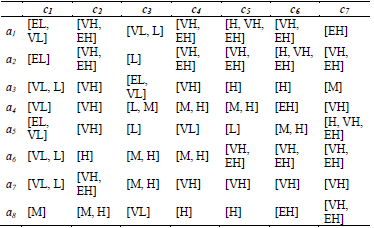
Source: The authors.
Table 6 Result of converting linguistic expressions to the HFLTS format (decision maker 2).
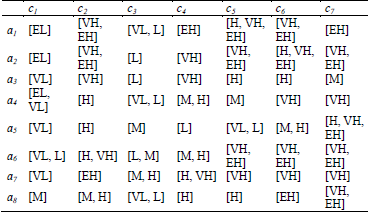
Source: The authors.
After aggregating the judgments of the decision makers, the positive ideal solution
 and negative ideal solution
and negative ideal solution
 were defined for each of the seven criteria considered. For most of the criteria, eq. (6) was used to determine the values of
were defined for each of the seven criteria considered. For most of the criteria, eq. (6) was used to determine the values of
 , while eq. (7) was applied to find the values of
, while eq. (7) was applied to find the values of
 In the case of criteria c
1
and c
3
, as these were modeled as cost criteria, eq. (7) was used to calculate
In the case of criteria c
1
and c
3
, as these were modeled as cost criteria, eq. (7) was used to calculate
 while eq. (6) was applied to calculate
while eq. (6) was applied to calculate
 . Thus, for the criteria of model 1, we obtained
. Thus, for the criteria of model 1, we obtained


 For the criteria of model 2, results are
For the criteria of model 2, results are
 =[[EH][VH,EH][EH][EH]] and
=[[EH][VH,EH][EH][EH]] and
 =[[VL][VL,L][M,H][M]].
=[[VL][VL,L][M,H][M]].
Using the values of
 and
and
 as well as the values of Table 7, the distances from the positive ideal solution (D+) and negative ideal solution (D-) for each alternative were calculated. For the calculation of D+ ,eq. (3) and (8) were used. Eq. (3) and (9) were used to calculate D-. The following matrices exemplify the calculations of D+ and D-. performed by computational model 1.
as well as the values of Table 7, the distances from the positive ideal solution (D+) and negative ideal solution (D-) for each alternative were calculated. For the calculation of D+ ,eq. (3) and (8) were used. Eq. (3) and (9) were used to calculate D-. The following matrices exemplify the calculations of D+ and D-. performed by computational model 1.
Results yielded by computational model 2 for D+ are presented next. Due to the limited space in this article, values provided by model 2 for D- were suppressed.
In both computational models, the values of the rc(a i ) for each alternative were calculated using eq. (10). The results achieved by suppliers in the dimensions "cost" and "operations performance" were used to categorize them according to step 3 in Fig. 2. In this application, values below 0.5 were considered “low”, while values equal to or greater than 0.5 are “high”. Table 8 presents the values of rc(a i ), the result of the categorization and the recommended guidelines for each supplier.
Fig. 3 represents the categorization results of suppliers according to the groups defined in Fig. 2. It can be noted that suppliers a 1 , a 2 , a 4 , and a 7 were classified in group I, which indicates that they have been meeting the buyer's expectations. Suppliers a 6 and a 8 were positioned in group II because they reached high performance in operations, but they do not meet the expectations in terms of cost performance. Supplier a 3 was categorized in group III, as it reached good results in the cost dimension but presented low in operations. Supplier a 5 have low performance in both dimensions. Therefore, it is recommended to replace it.
The decision makers endorsed the results provided by the computational models. Also, they agree that supplier a 5 should be replaced, since it supplies routine items and, in this case, it may not be advantageous for the purchasing company to implement supplier development programs.
4.2 Discussion of results
The results of the pilot application are somewhat similar to those found by the studies proposed by Lima Junior and Carpinetti [2], Osiro et al. [4], and Lima Junior et al. [21]. These studies also applied models based on fuzzy logic to assess suppliers of automotive companies and concluded that the vast majority of suppliers presented satisfactory performance, while a few suppliers required development programs and only one should be replaced.
When compared to other previous models to supplier performance evaluation, the proposed model has advantages such as:
Unlike all the previous models found in literature [2-5,11,12,17-19,21], it allows the decision makers to use linguistic expressions, or more than one linguistic term simultaneously, to evaluate the performance of a supplier in a given criterion;
Another advantage is dealt with group decision-making employing aggregation of the subjective judgments of several decision makers. Thus, it enables the use of qualitative data converted into quantitative data to assess supplier performance;
In contrast to models based on ordering suppliers [13-15], it allows indicating appropriate action plans for each group;
Unlike approaches based on pairwise comparison [3,11,12,17-19], the proposed model allows using a not limited number of suppliers and criteria.
5. Conclusion
This study presented a decision model based on the Hesitant Fuzzy TOPSIS method to support supplier performance evaluation. A pilot case was developed to demonstrate and validate the use of the proposed model.
The proposed approach allows assessing suppliers on multiple criteria related to costs and performance of operations. The results achieved in each performance dimension are used to indicate actions to be taken by managers for the appropriate management of each group of suppliers. Thus, the proposed model allows managers to monitor the suppliers’ performance and to identify which ones need development programs to reduce costs or to improve the operations performance. It also helps to identify which suppliers presents underperformance and therefore should be replaced. Furthermore, the use of linguistic terms and expressions allows greater flexibility to express the decision makers’ judgments about the suppliers' performance, in addition to being more suitable to support decision-making processes under uncertainty and hesitation.
A limitation of the proposed model is that it does not make it possible to consider the criteria weights in linguistic format. It is due to a limitation of the Hesitant Fuzzy TOPSIS method [8]. In this sense, further studies may adapt this method to overcome this limitation. Other suggestions for further studies are: (1) to implement the model in the form of software with a graphical interface to test its usability by non-expert users; (2) to apply the proposed model in other purchasing companies to evaluate its adaptability in companies from different sectors; (3) to develop new decision models based on the Hesitant Fuzzy TOPSIS method to support the supplier sustainability assessment and the choice and evaluation of supplier development programs; (4) to compare the results of this study with other decision techniques based on Hesitant Fuzzy Linguistic Term Sets.













